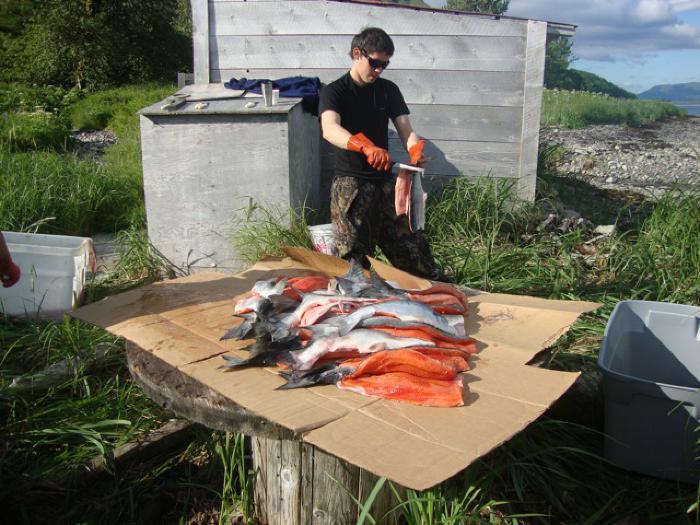Fish Cut for Drying — Seg’aq

An essential step in preserving Kodiak’s wealth of salmon for winter use is to prepare it properly. To prevent bacterial growth and rotting, salmon flesh can be frozen, salted, or desiccated. Alutiiq people use each of these techniques, although traditional methods of air drying and smoking remain very popular. First, however, families must butcher their catch to create seg’aq–fish prepared for drying.
An elder recall that splitting fresh fish is more difficult than splitting aged fish, so men filled their skiffs with salmon and let them sit overnight. Women then worked to clean the catch, splitting over two-hundred fish a day at the height of the salmon season. In the late nineteenth century, records indicate that Karluk’s 300 villagers cleaned about 100,000 fish a year!
There are many ways to butcher fish for seg’aq. The goal is to expose the meat to aid drying. Typically, people remove the head, spine, and ribs, creating two filets attached at the tail. Some people also score the flesh. Deep, angled cuts into the meat, perpendicular to the length of the fish, allow moisture to escape.
People hang their seg’at on wooden racks, suspending the filets by the tail. Experienced fish processers report that it is important to split the fish carefully so that both fillets are the same weight. If one filet is heavier than the other, the fish will slip off the drying rack. Drying takes about three weeks. On dry days, the fish flesh faces outward, but on wet days, people reverse the filets, facing the skin outwards to protect the meat.
